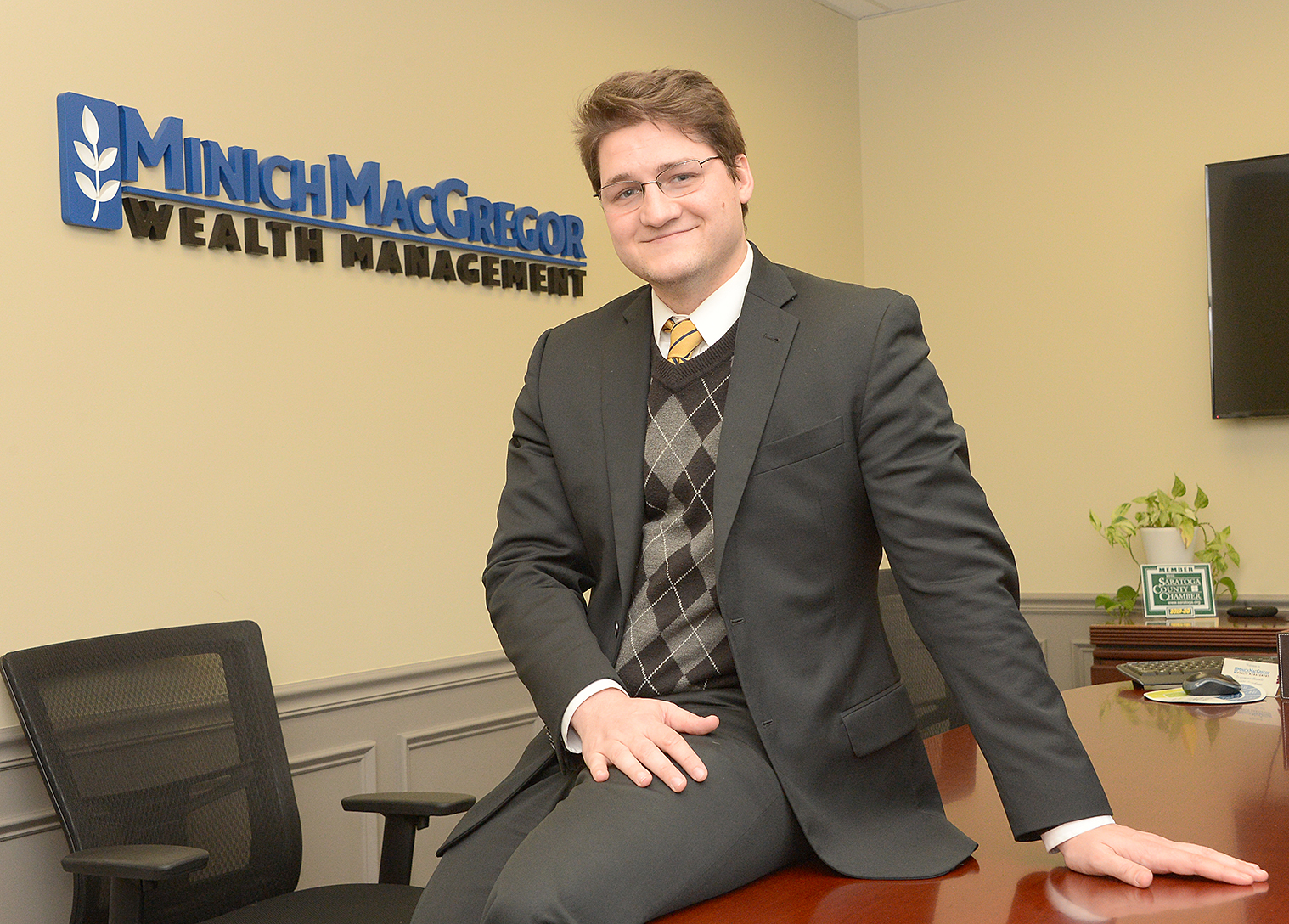
©2020 SaratogaPhotographer.com
By Susan Elise Campbell
Retirement plan holders went on a historic roller coaster ride this past year, but to their credit they held on tight, said local investment professionals.
“Fortunately no one panicked in March,” said Mark Wells, CFP, co-founder of Three Buckets Wealth Management serving clients out of Fort Covington and Glens Falls.“In all aspects of life, when things are up in the air it’s easier to act irrationally.”
Uncertainty is what no one wants, said Wells.
The Three Buckets formula is to determine guaranteed income sources such as Social Security and pension, then calculate the gap between that amount and what the client wants to live on in their retired years, he said.
With a comprehensive plan and short, intermediate and long-term investment buckets in place, Wells said “clients understood how unexpected market swings can affect their overall goals and therefore did not act emotionally” when COVID-19 drove down the stock market.
“Who could know how the pandemic would play out?” said Conor Boyd, managing partner of Thoroughbred Advisors, which has a Queensbury office. “But we were prepared by being positioned in such a way that we could take advantage of opportunities.”
Boyd highlighted the need for a strong liquidity position in any portfolio, through cash equivalents and a guaranteed portion, which is traditionally fulfilled by insurance products.
“One end of the advisory spectrum is investment and the other is insurance, an area in which some advisers fall short,” said Boyd.
He promotes three factors to successful retirement planning. “The first is a focus on habit formation, which includes automated savings. Next are the tools, including investments and insurances. The third is the strategy that informs the habits to create and the tools to implement.”
At Minich MacGregor Wealth Management in Saratoga Springs, financial planner Cory Laird, CFP said the methodology is “to determine the risk profile and make sure clients are getting the growth rate they’re expecting and the amount of sleep that they want at night” using a sector rotation strategy.
“Even if we see a couple of down years, customers can still be comfortable,” he said.
With COVID’s striking impact on investments, Laird said “by the time clients got their statements the first week in June, the markets were already improving.”
Now, with a new year and a new administration ahead, professionals are focusing on planning techniques that help retirement account holders meet goals beyond simply accumulating money.
One strategy is to consider converting traditional IRA assets to a Roth IRA. There are two reasons why, say the experts. The first is the current ordinary income tax rates and the second is a new, but less advantageous, provision in the Secure Act passed at the end of 2019.
IRA assets can accumulate so much that when combined with other retirement assets, one’s tax rate may be higher than it is today. The current levels sunset in 2025, but people today are facing 30 years in retirement or more, Laird said.
While IRA assets may still be taxed at a marginal rate lower than it was during the client’s accumulation years, professionals say most people will be in a higher bracket during retirement than they had anticipated.
Roth IRA earnings are never taxed, said Laird, so if Congress has increased income tax rates or shifted brackets in the years withdrawals are made, Roth IRAs can become more attractive.
“Earlier this year, the concern was for legacy planning,” said Wells, when the Secure Act changed the required minimum distribution age for tax-deferred qualified plans from 70 1/2 to 72.
While that’s a plus, say the experts, that provision was countered with another that makes it difficult for beneficiaries to keep more money for themselves, according to Wells.
“In the past a non-spouse beneficiary could stretch distributions from the deceased’s plan over many decades based on life expectancy,” he said. “Now all assets must be liquidated within 10 years. That means that unless a person aged 72 takes more money out of the plan during retirement, there will be more left for beneficiaries who will incur a quicker and higher tax liability.”
One solution is a Roth IRA, which has neither a required minimum distribution nor any tax liability for beneficiaries.
He said there are also are strategies that shift retirement assets in order to be in control of taxes paid and money kept. “For some clients this may mean taking out more retirement money now and putting it into accounts managed in a way to provide tax advantages for heirs.”
Boyd said Roth 401(k) plans resolve tax issues for many retirees, but many lack knowledge about what they are and how to get an account.
“Many employees think they are not eligible, but every employee or small business owner may be eligible regardless of income,” said Boyd. “Adding the right option is straightforward if the existing plan doesn’t currently offer one, and employees should request it.”
But be careful with Roth accounts, said Laird. “Unlike a traditional IRA or rollover, Roth account assets can be used by Medicare during the five-year look-back period for nursing home care, although not in-home care,” he said.
Laird said he recommends to all eligible clients during the open enrollment period to carefully choose a Medicare Advantage plan that suits their needs for medications, dental coverage, and level of premiums versus co-pays.
He said the right health care program is another way of keeping more money for yourself, as some people have lost everything to expensive hospitalizations and treatments. For this same reason Laird is also a proponent of long-term care insurance.
